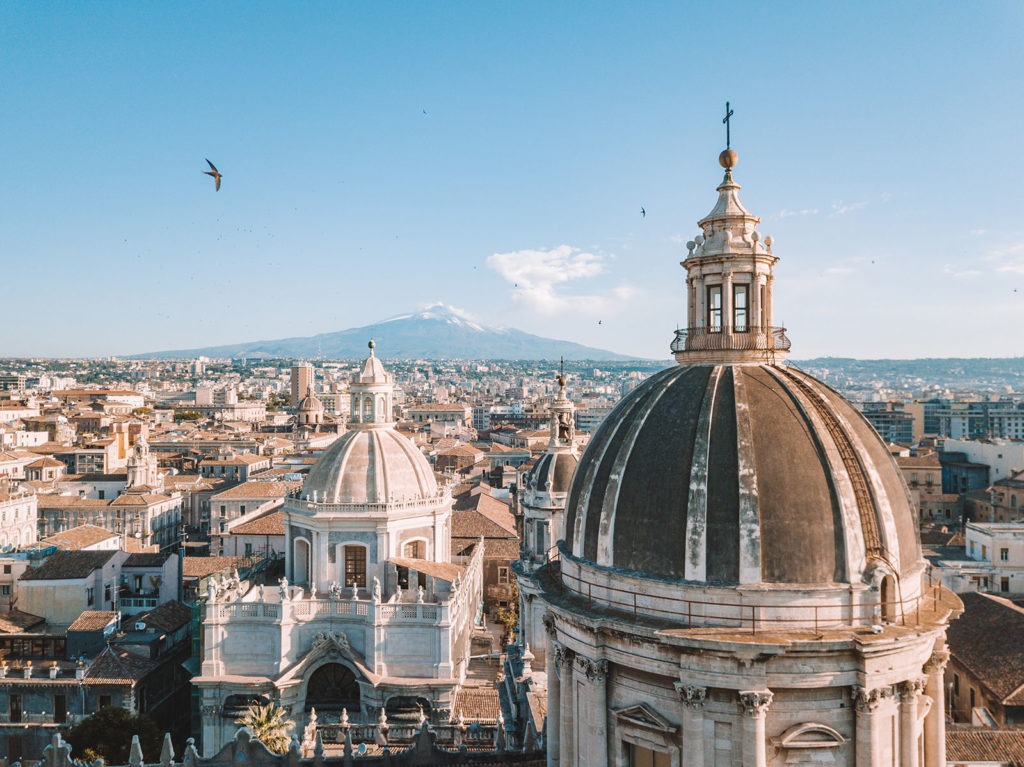Catania
is one of the cities located in eastern Sicily that overlooks the Ionian Sea and extends to the slopes of Mount Etna.

The volcano is the symbol of the Etnean capital, though over the centuries its constant activity has been the cause of ruinous events such as the catastrophic eruption of 1669, traces of which are still visible along the streets, and more clearly in the Benedictine monastery.
In 1693 the city was struck by a disastrous earthquake and razed to the ground.
Reconstruction took place on the same site given the strategic position for trade between the coast and further inland. Where possible, the pre-existing buildings were restored, including the fortifications, apses and transept of the Norman Cathedral and some ancient buildings.
The city’s reaction to the earthquake was characterised by the great commitment of the Spanish ruling class, the state and religious authorities who demonstrated a remarkable capacity for organisation and foresight.
Giuseppe Lanza, Duke of Camastra
was appointed by the Viceroy Duke of Uzeda as vicar general and quickly implemented the plan to rebuild Catania as soon as 1694. This “plan” was conceived in a unitary fashion, set on a system of roads that were
orthogonal
and no longer exclusively rigid. Within the system were a series of wide streets and squares that were geometrically different from one another.
